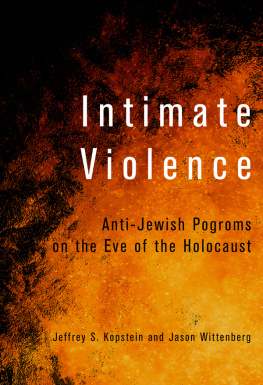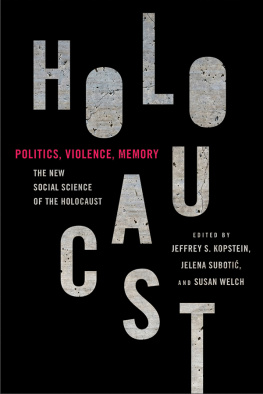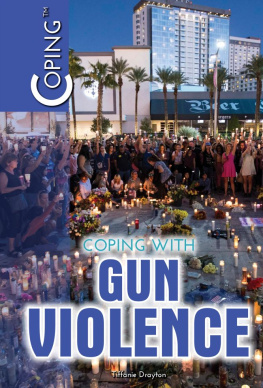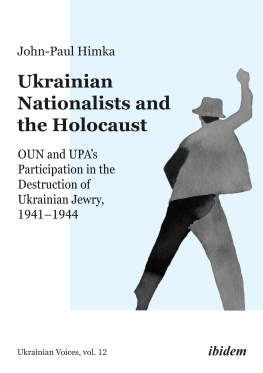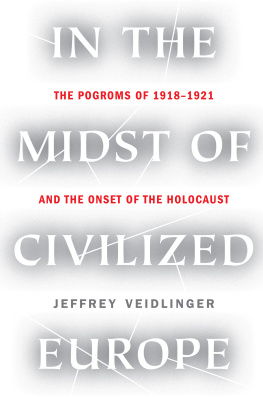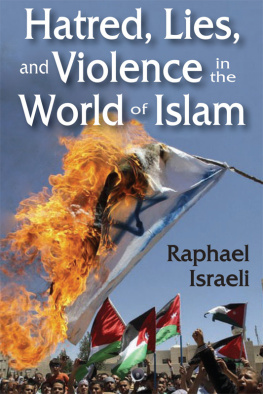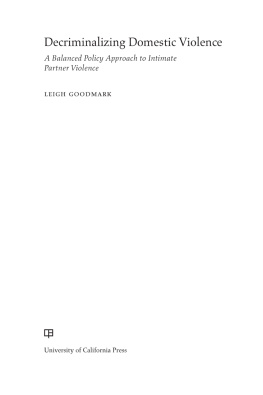Preface
This book grew out of an invitation to a conference on the Holocaust and its local contexts. Jan Grosss Neighbors had been published several years earlier and debates continued (and still continue) to rage about who had committed the Jedwabne pogrom and why. It was an unexpected opportunity to bring together two important streams of scholarship that had never adequately been integrated: the large social scientific literature on intercommunal violence and a new generation of Holocaust historiography that situated the violence in specific communities, each with its own backstory. Could the theories and approaches used to explain ethnic violence in other contexts help explain the neighbor-on-neighbor violence that broke out in hundreds of communities in the eastern Polish borderlands as the Germans passed through in summer 1941?
Our intuition was that the roots of more than two hundred 1941 pogroms were located in the ethnic demographics and political behavior of the interwar era, information that we had already been collecting for a project on the ethnic origins of dictatorship and democracy. The historical literature focuses on anti-Semitism and beliefs about Jewish support for communism. The social science literature, which does not analyze these pogroms in any detail, suggests the answer lies in the economic and political threat to pogrom perpetrators by those who would become their victims. Our data could speak to these arguments. We discovered a connection between interwar political behavior and the occurrence of pogroms that centered on the local political milieu and, in particular, non-Jewish rejection of Jewish efforts to achieve national rights within Poland.
We were not working in a vacuum. Other scholars before and during our research had already started the slow and painstaking job of documenting pogrom occurrence and nonoccurrence; we supplemented this work with our own archival and secondary research across multiple languages. To this we added our interwar census, electoral, and other data. We sought out the expertise of many historians who specialize in Poland and the Holocaust, and the following deserve special mention: Doris Bergen, John Connelly, Sol Goldberg, Antony Polonsky, Anna Shternshis, and Timothy Snyder. We have presented this research at many institutions and conferences and have benefited tremendously from the feedback of our colleagues in political science, history, and Jewish studies.
Data collection is not only tedious, but expensive. We could not have completed this project without generous funding from the National Science Foundation, the National Council for East European and Eurasian Research, the Social Sciences and Humanities Research Council of Canada, the University of Toronto, the University of WisconsinMadison, the University of CaliforniaBerkeley, and the University of CaliforniaIrvine. We owe a great debt of gratitude to our many undergraduate and graduate research assistants, who performed the crucial but often unglamorous task of keying in and checking the accuracy of entered data. Special thanks go to Sarah Cramsey for her help with the Polish literature and comments on the entire manuscript, and to Laura Jkli for her technical expertise.
We are particularly grateful to Roger Haydon at Cornell University Press for his patience, professionalism, and good judgment and to two readers who offered very important advice for revision. Finally, to our spouses, we apologize for spending so long on such a depressing topic and appreciate the sacrifices you have made that allowed us to finish what we hope will be a lasting contribution to the social scientific study of ethnic violence and the Holocaust.
A note on language: we use the preWorld War II Polish version of place names except where the English spelling is internationally recognized. Therefore, we use Warsaw and Volhynia rather than Warszawa and Woyn. In eastern Poland, many of these place names also have Ukrainian, Yiddish, German, and/or Belarusian variants. We remain with the Polish versions for clarity of presentation and to avoid ambiguities introduced by transliteration.
WHY NEIGHBORS KILL NEIGHBORS
Two tragedies befell the Jews of Eastern Europe after the outbreak of World War II. The first and by far the best known and exhaustively researched is the Holocaust, the Nazi extermination effort. The second is the violent explosion of the latent hatred and hostility of local communities (bikowski 1993, 174). With the Soviet army retreating, the German army advancing, and government authority collapsing, civilian populations across hundreds of villages and towns stretching from the Baltic states in the north to Romania in the south committed atrocities against their Jewish neighbors. These often gruesome and sadistic crimes ranged from looting and beatings to public humiliation, rape, torture, and murder. One of the most widely known such incidents occurred in the town of Jedwabne, Poland, on July 10, 1941. In a day-long rampage under the approving eyes of the Germans, Poles committed mass murder. The Jews were ordered to gather in the town square, where among other humiliations they were forced to clean the pavement, smash the monument to Lenin, and hold a mock religious funeral on his behalf. Those who attempted to flee were hunted down and clubbed, stoned, knifed, and drowned, their bloodied corpses often left in pits. Apparently dissatisfied with such inefficient methods of murder, the perpetrators herded hundreds of remaining Jewswomen, children, the old, and the sickinto a barn that was doused with kerosene and set alight (Gross 2001). Ethnic violence is never easy to comprehend, but it is especially puzzling when the perpetrators are civilians and the victims are their neighbors (Fujii 2009; Straus 2006; Kalyvas 2006).
This book investigates the reasons for such intimate violence. The 1941 pogroms are a particularly interesting instance of such violence for two reasons. First, they happened under conditions of state collapse. Many who study ethnic violence emphasize the key role of state elites in orchestrating conflict (e.g., Brass 2003; Gagnon 2004; Lambroza 1992; Wilkinson 2004). But state actions cannot explain the 1941 pogroms because state institutions in the areas of Poland under Soviet control had all but collapsed by the time they occurred. The Germans invaded the Soviet Union on June 22, 1941, but did not establish full political authority on Polish territory that had been annexed to the Soviet Union until at least September (bikowski 2007, 315; Snyder 2008, 96). In the period between Soviet and German rule, there was no central government in this region. To the extent anyone was in control, it would have been the Germans, but, as we argue later in this chapter, they did not yet function as a de facto state elite. Although the Germans did try to incite pogroms, they met with only limited success. Pogroms occurred both with and without the Germans being present. Like Kalyvas (2006) and Petersen (2002), we seek to understand ethnic violence under conditions of state collapse such as can occur during periods of war, civil war, regime change, and the collapse of empire.
Second, the scale of the attacks demonstrates that ethnic violence is not an inherent feature of intergroup life under anarchic conditions, even with relationships as long-standing and conflictual as those between Jews and non-Jews. Given the long history of restrictions, attacks, and expulsions directed against Jews in Eastern Europe, it is easy to believe that non-Jews must have eagerly assaulted their Jewish neighbors when the Nazi onslaught on the Soviet Union presented an opportunity. After all, the Germans were, if anything, sympathetic to those who wanted to attack Jews, and in the absence of a state the clouding features of legal restraint (Petersen 2002, 12) disappeared and people were freer to act on their desires. As Kalyvas (2006, 389) notes in regard to civil wars, chaotic and uncertain circumstances offer irresistible opportunities to harm everyday enemies. Where violence did occur it was often quite gruesome and could include beheading, the chopping off of limbs, rape, and the ripping of fetuses from the wombs of pregnant women.

